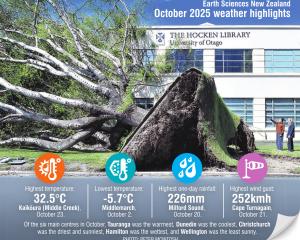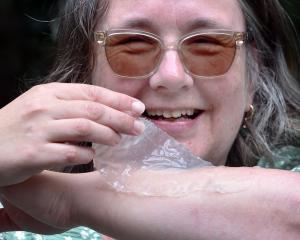
However, for the critics of this project it might feel more like a millstone for the region.
The Australian mining company’s plans for the country’s biggest new gold mine in 40 years remain contentious.
In an era of high gold prices, environmental groups are worried the massive project will be just part of a modern-day Otago gold rush which will threaten the region’s scenic value, ecosystems, water and existing industries.
While the company says it is committed to showing how modern resource development can be done responsibly, maintaining environmental integrity, strengthening regional economies and standing behind its rehabilitation commitments, the devil will be in the detail.
That detail presumably lies in the more than 9500 pages of documentation and 135 reports which have been lodged with its application to the Environmental Protection Agency (EPA).
Up until now there seems to have been more said by the company about the possible economic impact of the project than the environmental one: more than 300 jobs, $5.8 billion in economic activity and $1.8b in tax and royalties over the 14 years of the mine.
That full documentation it has provided is not going to be made public until the EPA has checked it, so it will be some time before we can all see whether what the company calls its serious technical work and environmental assessment by experts stack up.
The company’s claim the mine will be one of the most scrutinised projects Central Otago has seen is hard to assess at this point.
The company says it has not released reports piecemeal because that would risk confusion and misinterpretation and it wanted the public to see the complete, verified picture.
It says it will welcome informed scrutiny of the evidence when it is released and that its focus has been on providing the complete picture so the community can review all information in context.
That is laudable, but under the process which applies under the fast-track legislation, the input from the community, whatever its views, will be limited.

Once set up, that panel has 10 working days to invite comments.
It must invite such comments from relevant local authorities and iwi and any relevant Treaty settlement entities, the owners and occupiers of the land involved and adjacent land, the Minister for the Environment and other relevant portfolio ministers, and relevant administering agencies including the Department of Conservation.
A mere 20 working days from the date of the invitation is allowed for these entities to provide comments.
The panel may also ask others to provide comment, and in this case, Sustainable Tarras is keen to be involved.
It is the group of Upper Clutha residents initially set up to fight the establishment of the proposed airport at Tarras and which has moved its focus to the impact of the mine.
There is no guarantee it will have input.
If it does, it will be a big task for it, as a voluntary community group, to review the plethora of documents adequately in the time allowed.
The group is of the view the project is unsuited to the fast-track process because of the limited evaluation involved.
The application also comes at a time when the government is poised to make more than 100 alterations to the fast-track legislation under urgency before Christmas with limited select committee scrutiny.
The changes, if introduced, are designed to make approvals even faster and some would involve more ministerial input.
Whatever happens next with the Santana proposal will be a real test of the fast-track process and whether it is capable of providing proper and rigorous evaluation of any environmental risks.
If it gets this wrong, it will be too late to sort it out in 14 years’ time.












